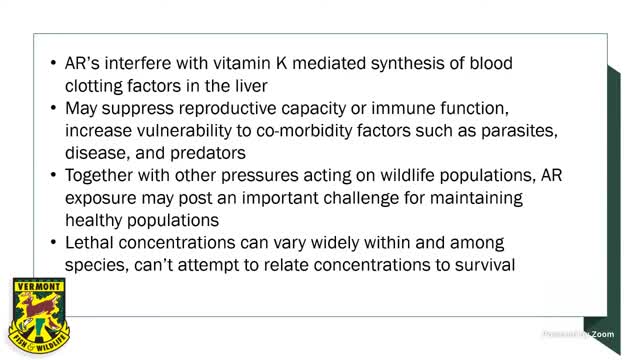Wildlife Department studies 150 annual fisher and bobcat carcasses for contaminants
April 15, 2025 | Agriculture, Food Resiliency, & Forestry, HOUSE OF REPRESENTATIVES, Committees, Legislative , Vermont
This article was created by AI summarizing key points discussed. AI makes mistakes, so for full details and context, please refer to the video of the full meeting. Please report any errors so we can fix them. Report an error »

In a recent meeting of the House Agriculture Committee in Vermont, discussions centered around wildlife management and the implications of trapping practices on local ecosystems. The meeting, held on April 15, 2025, revealed significant insights into the state's handling of certain animal populations, particularly fisher, bobcat, and otter.
Every year, Vermont receives approximately 100 to 150 fisher carcasses from regulated trappers, a practice mandated by state regulations. These trappers are required to turn in the carcasses of these species, which allows the Department of Fish and Wildlife to conduct vital studies, including necropsies and contaminant testing. Over the past three trapping seasons, data collected from 71 fisher and 29 bobcat carcasses indicated that all sampled fishers had been exposed to at least one rodenticide compound, while the majority of bobcats showed similar exposure.
The committee members expressed curiosity about the motivations behind trapping these animals. It was clarified that these species are not considered pests; rather, they are trapped during regulated seasons for various reasons, including the potential for making products from their hides or even for food. The discussion highlighted that while some trappers may have commercial interests, others might engage in trapping for personal consumption or other benefits.
The conversation also touched on the types of traps used, emphasizing the importance of humane and efficient methods. Body gripping traps are commonly employed for species like otters, while different traps may be more suitable for other animals.
As the meeting concluded, the implications of these findings raised questions about the broader impact of rodenticide exposure on the food chain, particularly concerning predatory animals. The committee's ongoing discussions reflect a commitment to understanding and managing wildlife populations responsibly, ensuring that Vermont's natural ecosystems remain balanced and healthy.
Every year, Vermont receives approximately 100 to 150 fisher carcasses from regulated trappers, a practice mandated by state regulations. These trappers are required to turn in the carcasses of these species, which allows the Department of Fish and Wildlife to conduct vital studies, including necropsies and contaminant testing. Over the past three trapping seasons, data collected from 71 fisher and 29 bobcat carcasses indicated that all sampled fishers had been exposed to at least one rodenticide compound, while the majority of bobcats showed similar exposure.
The committee members expressed curiosity about the motivations behind trapping these animals. It was clarified that these species are not considered pests; rather, they are trapped during regulated seasons for various reasons, including the potential for making products from their hides or even for food. The discussion highlighted that while some trappers may have commercial interests, others might engage in trapping for personal consumption or other benefits.
The conversation also touched on the types of traps used, emphasizing the importance of humane and efficient methods. Body gripping traps are commonly employed for species like otters, while different traps may be more suitable for other animals.
As the meeting concluded, the implications of these findings raised questions about the broader impact of rodenticide exposure on the food chain, particularly concerning predatory animals. The committee's ongoing discussions reflect a commitment to understanding and managing wildlife populations responsibly, ensuring that Vermont's natural ecosystems remain balanced and healthy.
View full meeting
This article is based on a recent meeting—watch the full video and explore the complete transcript for deeper insights into the discussion.
View full meeting